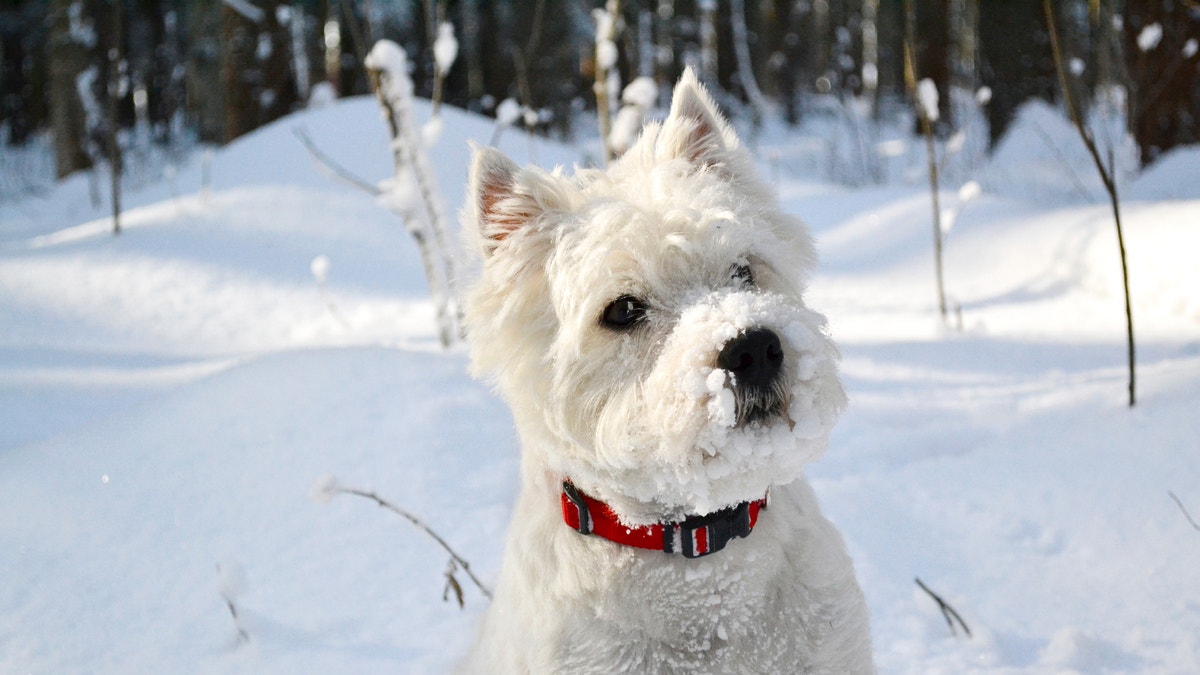
With weathermen across the East Coast sounding alarm over an impending snowstorm that could bring blizzard conditions to much of the region, Los Angeles-based veterinarian Dr. Jeff Werber said it’s crucial to remember pets can be as susceptible to cold-weather dangers as humans.
Werber, a veterinarian for more than 30 years who owns 11 pets himself, told FoxNews.com that although cats and dogs are better equipped to handle cold weather than humans, if it’s chilly for us that means it’s chilly for them.
“A good coat is like a thermos: It’ll keep you warmer, maintain your body temperature and keep you from the cold,” Werber told FoxNews.com. But, even for those arctic breeds that have a thick undercoat meant to offer protection from the cold, subzero temperatures with a wind-chill and a lack of activity could signal danger.
How does a dog’s size impact their body heat?
“The truth is, the larger the dog, the larger the body surface per body weight, there’s more surface area to lose their body heat,” Werber told FoxNews.com. “So these dogs should be protected, especially ones with thin coats or no coat.”
“Don’t laugh at those little dogs walking around with little coats and sweaters on,” he said, adding that big dogs should have an added layer of protection like a jacket or sweater as well. Werber said that even for large breeds, if they are not actively working or running around in the cold, they’ll need shelter just as much as smaller breeds.
What supplies can help keep dogs safe during a winter storm?
“Make sure they have a doggie door, or some sort of shelter like a dog house, and if possible and safe, a floor heater,” said Werber, adding that the concern is really for the dog left outside in the elements for an extended period of time, like when an owner is at work. He said it’s also important to ensure these dogs have water in either a heated bowl or protected area.
How can cold weather affect cats?
Werber explained it’s not as necessary to provide shelter for cats, because they are typically more sufficient in finding their own, but that the danger lies in where they choose the shelter to be.
“The problem is, they go under the car, up into the engine block where it’s warm and it’s nice and cozy, and they take a cat nap and then in the morning the owner gets in the car and starts it,” Werber said. “There’s many dangers with the cats getting caught in the fan belt, it’s happened before it will continue to happen and it’s very bad.”
Werber said that people who have cats, or know of cats that roam around the neighborhood, should bang on the hood of their car before starting the engine to startle the cat awake. Pet owners should also be aware of the dangers of antifreeze, which is extremely toxic to both cats and dogs.
“Many older brands have a sweet taste,” Werber said, adding that cats and dogs would be inclined to continue licking it. “Now, there are bitters in it so cats and dogs won’t lick it.” However any antifreeze— bitter or sweet— put in the car is toxic to the animals, and should be carefully monitored. He advised owners to search for newer brands with added bitters to cut down on the risk.
How can I protect my pet from the cold outdoors?
The paws of these animals are also susceptible to harm during cold weather, especially when salt is put down to melt snow and ice. Werber said that salt is an irritant, and that because the animals’ pads are poorly protected, those that are being walked through these areas should wear boots or some kind of protection. For those concerned about whether their animal will eat the salt, Werber said that it’s unlikely because of the taste, but owners should watch for dehydration.
Despite all the hazards, there are some dogs who do enjoy frolicking in the snow, and Werber said it’s not necessary to discourage them from doing so, just be vigilant in watching for signs of distress.
“Dogs love to frolic, they love playing in the snow,” he said, “and that’s fine because they’re moving playing and running.”
What are some warning signs that my pet is too cold?
Pet owners should become concerned if their pet is suddenly lethargic, unwilling to open his mouth, have cold breath or lowered body temperature.
“The hard part about this is they don’t like to show their ailments or problems, and sometimes it can be too late,” Werber said. “The best treatment is to prevent.”
